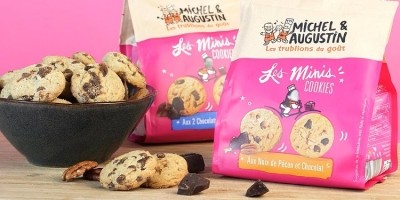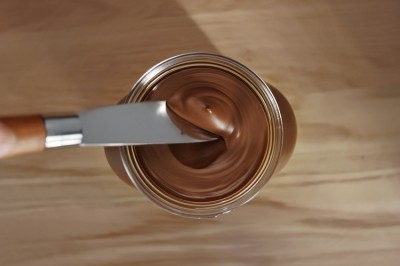How is Ferrero balancing M&A growth with packaging sustainability?

Ferrero Group is growing. Since 2018, the sweet-packaged food major has increased production output by more than 16%, and with that comes growth in total carbon emissions.
The vast majority (92.7%) of Ferrero’s greenhouse gas emissions come from its supply chain. Within those indirect Scope 3 emissions, most (64.1%) can be attributed to raw materials, but second in line comes packaging – making up 12% of Ferrero’s Scope 3 emissions.
The challenge for a company like Ferrero, therefore, lies in continuing to grow as a business – and increasing production output – while reducing its packaging footprint.
Does acquiring new brands help or hinder the process?
Ferrero makes packaging progress, but M&A could shift its objectives
A look at Ferrero’s recent acquisition history suggests the sweet food manufacturer – which owns household brand names Ferrero Rocher, Tic Tac, and Kinder – has been busy.
In recent years, the Group has made acquisitions ranging from Fresystem in Italy to Fulfil Nutrition in the UK and Wells Enterprises in the US.
In FY 2022/23 Ferrero recorded a total consolidated net turnover of €17bn, coming from a total production of more than 1.5m tonnes of goods.
While acquiring these brands, Ferrero is also working to meet its packaging targets. But as the Group continues on its acquisition trajectory, some elements of those ambitions may change, revealed Reginaldo Tavares Da Silva, who heads up packaging for Ferrero Group.
This is more likely to be the case when newly onboarded brands are further behind in their sustainability journey than Ferrero would like.
“As Ferrero welcomes new, acquired brands as part of its business growth strategy, the company is reviewing its overarching sustainability commitments across key areas, including in packaging, to ensure that they continue to remain relevant and reflect the reality that some of its acquired brands are at a different stage in their sustainability journey.
“We know that this might imply a revision in baseline, as well as unpredictable new challenges.”
What are Ferrero’s packaging targets? And is it hitting them?
One of Ferrero’s major packaging ambitions is for more than 90% of its packaging to be designed to be reusable, recyclable, or compostable – inclusive of newly acquired businesses.
In Ferrero’s recently published 2023 Sustainability Report, the Group is celebrating having achieved 90.7% packaging designed for recycling, reuse or composting, marking a 2.2% increase compared to the previous year.

This is a goal Ferrero wants to maintain, Tavares Da Silva told this publication. “To do so, a combination of approaches in our packaging strategy is needed – with packaging designed to be recyclable, reusable, or compostable depending on the properties and requirements of the packaging used, and in order to ensure product protection and quality.”
Other targets include increasing recycled plastic content by 12% (from a 2019/20 baseline), and a 10% reduction in virgin plastic use, both by 2025.
Progress has been made here. In FY 2021/22, 4.3% recycled content was used in plastic packaging. This is now up to 5.4%. Over the last year, renewable materials in packaging is up from 40.2% to 40.5%.
Ferrero's greenhouse gas emission targets
Ferrero aims to reduce absolute Scope 1 and 2 emissions by 50% by 2030 from a 2018 baseline. In its 2023 Sustainability Report, the Group is reporting an absolute reduction in Scope 1 and 2 GHG emissions by 10% from the 2017/18 baseline.
Ferrero also aims to reduce Scope 1, 2 and 3 emissions intensity by 43% by 2030 from a 2018 baseline. Reducing the carbon footprint in Scope 3 remains the most complex and challenging aspect for Ferrero.
The Group continues to transition from multimaterial to monomaterial flexible films, which serves its ambitions in two ways: by replacing hard-to-recycle plastic and cutting its use of virgin plastics.
This past year, Ferrero converted Kinder Pinguì, Kinder Maxi King and Kinder Paradiso from multimaterial to monomaterial packaging. A total of 78% of the Group’s plastic films are now monomaterial, considering primary, secondary and tertiary packaging.
Will Ferrero invest in reusable and compostable packaging innovation?
As suggested by Ferrero’s monomaterial push, the Group is largely reliant on recyclability – rather than reuse or compostability – when it comes to packaging innovation.
But this may change going forward, suggested the packaging chief.
“Despite the current focus on recyclability, through our work with partners, and continuous investment in R&D, we’re exploring even more ways to introduce compostable packaging where this brings a real benefit to the environment and taking into account relevant legislation.”

The year 2022/23 will be remembered for other packaging innovations, however. This was the year that Ferrero replaced its Rocher polystyrene box with polypropylene to cut its use of virgin plastic in the pralines category. Having converted its 30-piece and 16-piece boxes, it’s now started converting its 24-piece gifting box in Europe.
The confectionery maker also focused on packaging reduction within operations. At Ferrero’s Hangzhou plant in China, the company introduced an anti-slip glue on cardboard boxes, which it can use instead of plastic wrapping film. The boxes maintain their recyclability, while achieving a total reduction of 4.7 tonnes of plastic film used for the Kinder Chocolate packaging.
Ferrero now plans to rollout similar technology for the packaging of other lines.
Is packaging ‘designed for recycling’ the same as ‘recyclable packaging’?
Ferrero aspires to maintain its more-than-90% rate for packaging designed to be to be recyclable, reusable, or compostable. But currently, just 84.8% (up from 83.2% since FY 2021/22) is recyclable, reusable or compostable.
This suggests that ‘recyclable’ packaging is not the same as ‘designed to be recyclable’ packaging; just because packaging is designed to be recycled, doesn’t mean it will end up being recycled.
Spotlight on sustainable sourcing of ingredients
Ferrero aspires for more than 90% of its main ingredients to be traceable back to origin.
The Group has achieved 90% traceability for hazelnuts back to farmers; 98% of its palm oil is traceable to plantations. 100% of its cocoa beans is sourced through independent sustainability standards.
There are at least two potential inhibitors to the recycling process. One is the consumer. But awareness around recyclability is thought to be growing, with an increasing number of consumers responsibly disposing of recyclable packaging at its end-of-life.
The other is recycling infrastructure. Packaging can be designed for recyclability, but if sold in a geography with inadequate recycling infrastructure, that packaging won’t be recycled.
Ferrero acknowledges these challenges. “Whilst packaging can be designed to be recyclable – meaning packaging that complies with existing eco-design guidelines and has the required characteristics to be technically recyclable – unfortunately this doesn’t always mean it is eventually recycled,” Tavares Da Silva told this publication.
“Once packaging is technically recyclable, it is ready to be collected, sorted and recycled in practice and scale, however this is dependent on the infrastructure available, which can vary market to market.”
The confectionery major says it’s ‘committed’ to trying to meet these challenges and is working with partners to accelerate the pace of recycling infrastructure development.

Moving forward, Ferrero is preparing for the ‘many’ challenges on the horizon, including new packaging legislation in Europe (Packaging and Packaging Waste Regulation). “The main impacts we foresee will be on recyclability and recycled content,” noted the Group in its report.
At the same time, the company is wary of new technologies that may promise sustainability, but could in fact be detrimental to the environment. “We will continue to consider opportunities to develop and use new materials considering responsible sourcing, recycling, reusing and/or composting, nevertheless always considering product quality, product safety and consumer needs.”
























